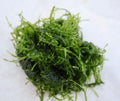How to Take Care of Hornwort Plants in Your Aquarium

Hornwort is a great option if you're considering adding some plants to your aquarium.
It is accessible at any aquarium store, requires little maintenance, and has a beautiful appearance. Additionally, it works with all varieties of fish.
We created this guide to make care for your hornwort plant simple due to its widespread use among aquarium hobbyists.
Why is it so well-liked?
It's easy. Hornwort is highly hardy, inexpensive, and simple to maintain.
It is a plant that has the ability to root or float. You have alternatives as to how you use it in your aquarium because of this. In addition to providing shade, it can also be employed to enhance the tank's aesthetic appeal.
It can withstand cold water very well, and in the wild, it uses turions to survive the winter. Turions are basically pieces of plants that break off and sink to the bottom of the body of water where they live.
These turions are awaiting the end of winter at the bottom of the ocean. Additionally, they sprout when it gets warm.
Although the actual number of hornwort species is unknown, it is safe to assume that there are between 115 and 150 species. It is a plant that is so common that in some areas of the world, it is regarded as an invasive species.
This is partially attributable to its hardiness, but it also has a secret weapon. Hornwort has the power to stunt the growth of other plants through allelopathy. We have a considerable competitive edge as a result.
The plant is thus widespread throughout the world. In fact, Antarctica is the only region where it hasn't yet been discovered!
Appearance
Green hornwort has numerous stems that branch out to give the impression that there are several different plants growing from one main stem. These have a maximum length of ten feet in the wild.
These stems produce tiny leaves that are uniformly spaced all the way to the plant's apex. These leaves, which are sometimes known as "needles," rarely measure more than an inch from top to bottom.
They feel velvety to the touch and give the stem a somewhat cat-like appearance. The average number of leaves in each group is twelve, and they are just around an inch long.
Compatible Fish
People who are thinking about putting hornwort in their aquarium often ask us things like this online.
Hornwort makes a terrific aquarium roommate, fortunately.
With this plant, you don't need to bother about choosing compatible tankmates. Everything looks wonderful with it!
While some of the animals in your tank won't even notice the hornwort, others will notice it and engage with it.
Some fish may consider hornwort to be a snack. It's likely that some animals, like gouramis, will consume the plant. Depending on your fish-to-plant ratio, this might not be a significant concern, but it's something to think about.
Scavenger animals in your aquarium will eat these little treats when your hornwort sheds (more on this later). This is advantageous for both them and you because your tank will be cleaner.
Additionally, guppies, mollies, Endler's livebearers, and platy fish may breed in your hornwort and lay their eggs there. This category includes any freshwater live fish you keep in your aquarium.
Reasons to Consider Including It in Your Aquarium
Hornwort is a great addition to aquariums for a variety of reasons.
The plant does an excellent job of reducing the level of nitrate in your tank, which is the first benefit. While hornwort won't totally solve your nitrate issues, you'll undoubtedly notice a difference.
Another quick and simple approach to improving your tank's appearance and feel is to add hornwort. It gives your aquarium a more organic and natural appearance while enhancing its overall visual appeal.
Watching your fish interact with it as it moves in the stream may be a lot of fun. You'll be perplexed as to how you ever loved your tank without it once you witness the before and after contrast.
The presence of hornwort in your aquarium has further practical advantages. Since hornwort is a plant, it produces oxygen through photosynthesis. As you may expect, this could be very beneficial for your tank.
Your fish will flourish and appreciate the increased oxygen in the tank. Maintaining an aquarium is all about simulating the natural world and keeping your fish healthy.
















